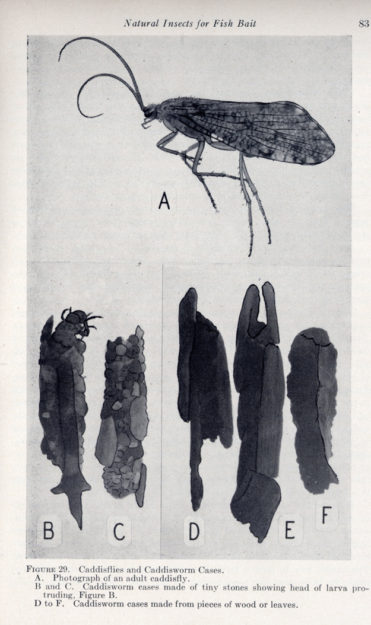Alvah Peterson, Fishing with Natural Insects, Columbus, Ohio, 1956, p. 82.

The great majority of caddisworms live in cylindrical, angular or circular, portable, cases which they build about their bodies. These are made of small pieces of wood, twigs, leaves, seeds, sand, pebbles, tiny shells, living molluscs and other small objects found in water. The parts are held together with secreted adhesive silk. Usually heavy, well constructed, small cases made of sand, tiny stones or shells are found on rocks in swiftly moving water while species that produce more fragile and larger cases made of lighter materials, namely parts of stems, leaves, twigs or seeds, occur on debris in quier watersof ponds and sluggish streams.
The size of the case varies with the species. Some are small, less than one-half inch in length, while others exceed one and one-half inches. Each larva within a case usually possesses a dark colored firmly constructed, head with chewing mouthparts and inconspicuous feelers.